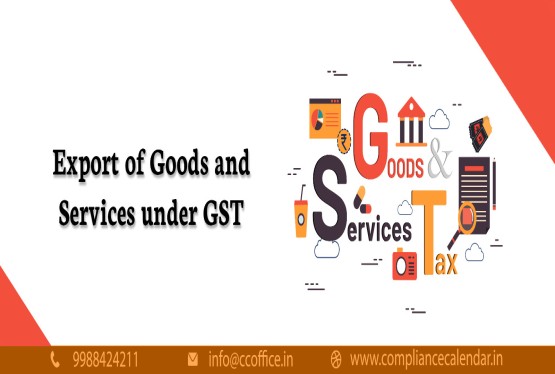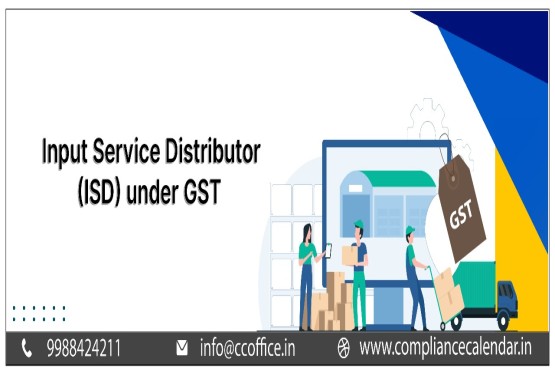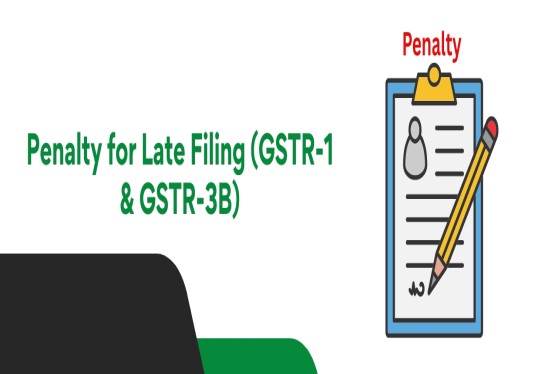The Goods and Services Tax (GST) is one of the most significant reforms in India’s indirect taxation system. Enacted in July 2017, GST has streamlined the tax structure by subsuming various central and state-level taxes into a unified system. One of the fundamental aspects that businesses must understand under this system is the threshold limit for GST registration. This threshold determines whether a business is required to register under GST or can continue operations without mandatory registration. This article explains the concept of threshold limits under GST, their variations based on nature of supply and geography, and related legal implications in an easy-to-understand manner.
What is the GST Registration Threshold Limit?
The GST registration threshold limit refers to the minimum turnover a business must reach before it is required to register under the Goods and Services Tax (GST) in India. As per current rules, businesses involved in the supply of goods must register if their annual turnover exceeds Rs.40 lakhs (Rs.20 lakhs in special category states). For service providers, the threshold is Rs.20 lakhs (Rs.10 lakhs in special category states). Voluntary registration is also allowed below these limits. Crossing the threshold without registration can attract penalties under the GST Act.
Who are Compulsorily Required to Register for GST?
Under the CGST Act, 2017, certain people are mandatorily required to obtain GST registration, regardless of their turnover threshold. These include:
1. Inter-State Suppliers: Businesses that supply goods or services across different states must register for GST, irrespective of turnover.
2. E-commerce Sellers: Individuals or businesses selling goods or services through e-commerce platforms like Amazon, Flipkart, or Meesho must register for GST.
3. Casual Taxable Persons: Those who occasionally supply goods or services in a taxable territory where they don’t have a fixed place of business.
4. Non-Resident Taxable Persons: Foreign individuals or companies supplying goods or services in India must obtain GST registration.
5. Input Service Distributors (ISD: Entities that receive and distribute input tax credit among branches with the same PAN need to register under GST.
6. Reverse Charge Mechanism (RCM) Liable Persons: Businesses liable to pay tax under reverse charge for specified goods or services are mandatorily required to register.
7. TDS/TCS Deductors: Government departments or e-commerce operators who deduct Tax Deducted at Source (TDS) or collect Tax Collected at Source (TCS) must register.
8. Agents of a Supplier: Persons acting as agents supplying goods or services on behalf of other registered suppliers are also required to register.
What is the Minimum Turnover Limit for GST Registration?
Under India’s Goods and Services Tax (GST) regime, the minimum turnover limit for GST registration varies based on the type of business, nature of supply (goods or services), and the state in which the business operates. GST Registration Limits Based on Turnover:
1. For Businesses Supplying Goods:
(a) 40 lakhs: Applicable to most Normal Category States.
(b) 20 lakhs: Applicable in Special Category States such as Manipur, Mizoram, Nagaland, Tripura, etc.
2. For Businesses Providing Services:
(a) 20 lakhs: Standard threshold across most Indian states.
(b) 10 lakhs: For Special Category States.
3. Compulsory Registration Cases:
(a) Inter-state Suppliers of goods or services must register regardless of turnover.
(b) E-commerce operators or sellers using platforms like Amazon or Flipkart need to register, even if their turnover is below the limit.
(c) Casual Taxable Persons and Non-Resident Taxable Persons must register irrespective of turnover.
4. Voluntary Registration: Even if your turnover is below the threshold, you can voluntarily register for GST to claim input tax credits and boost business credibility.
How to Calculate GST Threshold Limit?
To calculate the GST threshold limit, it's important to evaluate your aggregate turnover during a financial year. This helps determine whether your business is required to register under the Goods and Services Tax (GST) regime in India.
What is Aggregate Turnover?
Aggregate turnover refers to the total value of all outward supplies made by a person or entity under the same Permanent Account Number (PAN) across India. This includes taxable supplies, exempt supplies, exports, and inter-state supplies of goods and services. Importantly, this calculation is done excluding any GST charged on the invoice, meaning only the base value of the goods or services is considered.
What to Include in Aggregate Turnover:
1. Taxable Supplies: This includes all supplies of goods or services on which GST is charged, whether made within the state or across states.
2. Exempt Supplies: Even though no GST is payable, exempt supplies such as basic healthcare, education, and unprocessed food items must be included.
3. Exports: The total value of exported goods or services, even if made without charging IGST, is counted in the aggregate turnover.
4. Supplies to SEZ Units or Developers (Zero-Rated Supplies): Supplies made to Special Economic Zones are zero-rated and must be added to the total turnover, even if no tax is charged.
Including these components accurately is crucial for determining GST registration eligibility based on threshold limits.
What Not to Include in Aggregate Turnover:
1. GST Tax Amount (CGST, SGST, IGST, and Compensation Cess): The GST component charged on invoices is excluded from aggregate turnover. Only the value of the supply is counted.
2. Inward Supplies Liable to Reverse Charge: Purchases on which the recipient is liable to pay GST under the reverse charge mechanism are not included in the supplier's aggregate turnover.
3. Non-GST Supplies: Supplies like alcoholic liquor for human consumption and petroleum products (until brought under GST) are not included in the aggregate turnover.
4. Taxable Supplies Made by Job Workers on Behalf of Principals: Supplies made by job workers are not included in their own turnover if the principal declares the value of goods supplied.
State-Wise Applicability of New GST Turnover Limits in India
|
Category |
States/Union Territories |
GST Registration Threshold for Goods |
GST Registration Threshold for Services |
|
Normal Category States (New Limit) |
Andaman and Nicobar Islands, Andhra Pradesh, Bihar, Chandigarh, Chhattisgarh, Dadra and Nagar Haveli and Daman and Diu, Delhi, Goa, Gujarat, Haryana, Himachal Pradesh, Jharkhand, Karnataka, Kerala, Lakshadweep, Madhya Pradesh, Maharashtra, Odisha, Punjab, Rajasthan, Tamil Nadu, Uttar Pradesh, West Bengal |
Rs.40 lakh |
Rs.20 lakh |
|
Normal Category States (Status Quo) |
Telangana |
Rs.20 lakh |
Rs.20 lakh |
|
Special Category States (New Limit) |
Assam, Jammu and Kashmir, Ladakh |
Rs.40 lakh |
Rs.10 lakh |
|
Special Category States (Status Quo) |
Arunachal Pradesh, Manipur, Meghalaya, Mizoram, Nagaland, Puducherry, Sikkim, Tripura, Uttarakhand |
Rs.20 lakh |
Rs.10 lakh |
Notes:
-
The goods threshold refers to aggregate turnover beyond which GST registration becomes mandatory.
-
The service threshold is lower for special category states.
-
Composition schemes and e-commerce registration may have separate criteria.
Excluding these ensures an accurate calculation of aggregate turnover and proper compliance with GST registration thresholds.
Threshold Limit for GST Registration: A Legal Perspective
The threshold limits for GST registration are governed by Section 22 of the Central Goods and Services Tax (CGST) Act, 2017. As per this provision, every supplier is liable to be registered under GST in the state or union territory from where they make taxable supplies if their aggregate turnover exceeds the prescribed threshold in a financial year.
Changes in GST Composition Scheme Turnover Limits
In addition to Section 22, Section 23 of the CGST Act lays down categories of people who are exempt from GST registration even if they cross the threshold limit, such as agriculturists and people engaged in supplying exempt goods or services.
Under the GST framework, the Composition Scheme offers a simplified tax compliance option for small businesses. As for the latest updates, the turnover thresholds for eligibility are:
(a) Suppliers of Goods: Businesses with an annual turnover up to Rs.1.5 crore can opt for the scheme. For special category states like Arunachal Pradesh, Manipur, Meghalaya, Mizoram, Nagaland, Sikkim, Tripura, and Uttarakhand, the limit is Rs.75 lakh.
(b) Service Providers: Eligible if turnover does not exceed Rs.50 lakh in the preceding financial year.
These thresholds aim to reduce compliance burdens for small taxpayers by allowing them to pay GST at a fixed rate on turnover, without the facility to claim input tax credit.
Notification-Based Amendments to Threshold
The GST Council has periodically revised threshold limits through notifications. For instance, in Notification No. 10/2019–Central Tax, dated 07.03.2019, the threshold for exclusive supply of goods was enhanced from Rs. 20 lakhs to Rs. 40 lakhs with effect from 01.04.2019. Such notifications play a crucial role in GST law, and businesses must remain updated.
States also have the power to either accept or reject such recommendations. For instance, Kerala and Telangana have opted to retain the Rs. 20 lakhs threshold.
What Happens If You Don’t Register for GST?
If a person liable for GST registration fails to register, penalties apply under Section 122 of the CGST Act, 2017. The penalty is Rs.10,000 or 10% of the tax due, whichever is higher. If the evasion is intentional (fraud), the penalty increases to Rs.10,000 or 100% of the tax due, whichever is higher. Additionally, the unregistered person is liable to pay the due tax along with interest from the date it became payable. Non-registration also restricts the ability to claim input tax credit (ITC), affecting business operations and compliance.
Impact of Threshold Limit Changes on Different Industries
Changes in the GST threshold limit significantly influence various sectors, especially those dominated by small players.
-
Small and Micro Enterprises (SMEs) often feel the immediate impact. An increase in the threshold provides relief, exempting them from complex GST compliance like frequent return filing and extensive bookkeeping. This allows them to focus more on business operations and expansion. However, a lower threshold can strain such businesses, introducing new administrative and financial burdens as they cross into the taxable bracket.
-
Retail and Consumer Goods Industries also adapt their pricing strategies based on threshold shifts. A higher limit enables small retailers to stay outside the GST net, allowing them to offer competitive prices without GST. This could create disparities between GST-registered and non-registered businesses. Conversely, if the threshold is reduced, these retailers might raise prices to cover tax and compliance expenses.
-
Service Providers—such as freelancers, consultants, and small firms—are affected too. Since they often work with tight profit margins, any change in the threshold can directly impact how they quote prices, manage clients, and handle input tax credits.
-
E-commerce Sellers, though mandatorily required to register under GST, see indirect effects. Higher thresholds benefit their small-scale suppliers, reducing compliance efforts and encouraging broader vendor participation on digital platforms.
-
Export-Oriented Units and Manufacturers gain clarity from threshold rules, especially regarding input tax credits and refund eligibility. Being within the GST framework enables them to reclaim taxes on input, improving cash flow.
Overall, any modification in GST threshold limits sends ripples across sectors—easing operations for some while tightening regulations for others.
Final Thought
The threshold limit for GST registration is a critical element in determining a business's tax liability and compliance requirements under the GST regime. With different limits for goods, services, and special category states, businesses must keep a close watch on their aggregate turnover and the nature of their supply. While the limit acts as a relief mechanism for small businesses, compulsory registration provisions under Section 24 make it imperative to understand the full scope of the law. Voluntary registration, although not mandatory, can provide competitive advantages in certain scenarios.
A deep understanding of these threshold limits helps ensure not only legal compliance but also smooth business operations in India’s unified tax landscape.
If you have any queries regarding GST Registration limit, then you can connect with Compliance Calendar LLP experts through email info@ccoffice.in or Call/Whatsapp at +91 9988424211.
Frequently Asked Questions
Q1. What is the threshold limit for GST registration in India?
Ans. The threshold limit for GST registration is Rs.40 lakh for suppliers of goods in most states and Rs.20 lakh for suppliers of services. For special category states, the limit is Rs.20 lakh for goods and Rs.10 lakh for services.
Q2. Are there different GST threshold limits for goods and services?
Ans. Yes, the threshold for goods is generally Rs.40 lakh, while for services it is Rs.20 lakh. In special category states, the limit is Rs.20 lakh for goods and Rs.10 lakh for services.
Q3. Is GST registration mandatory if my turnover is below the threshold?
Ans. No, GST registration is not mandatory if your turnover is below the threshold limit, unless you fall under specific categories like inter-state supplier, e-commerce seller, or input service distributor.
Q4. What happens if I cross the GST threshold limit during the year?
Ans. If your aggregate turnover crosses the threshold during the financial year, you must apply for GST registration within 30 days of becoming liable.
Q5. Can I opt for voluntary GST registration even if I am below the threshold limit?
Ans. Yes, businesses can voluntarily register for GST even if their turnover is below the prescribed threshold. This helps in availing input tax credit and improving business credibility.









_crop10_thumb.jpg)


















































































_for_FY_2025-26_crop10_thumb.jpg)












_learn_crop10_thumb.jpg)








_Filing_Due_Dates_for_FY_2024-25_learn_crop10_thumb.jpeg)



























